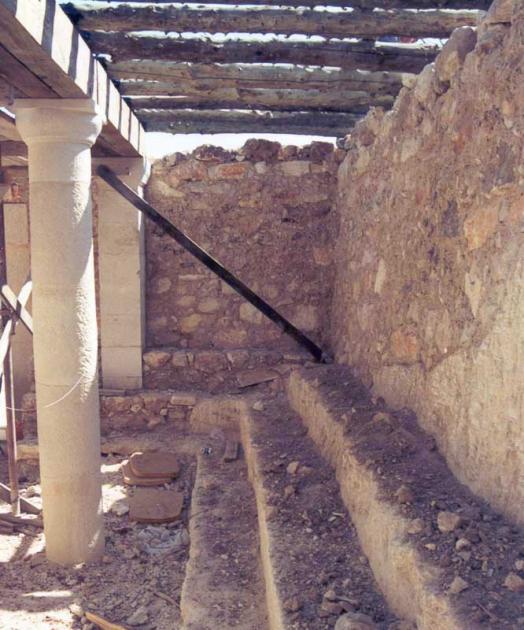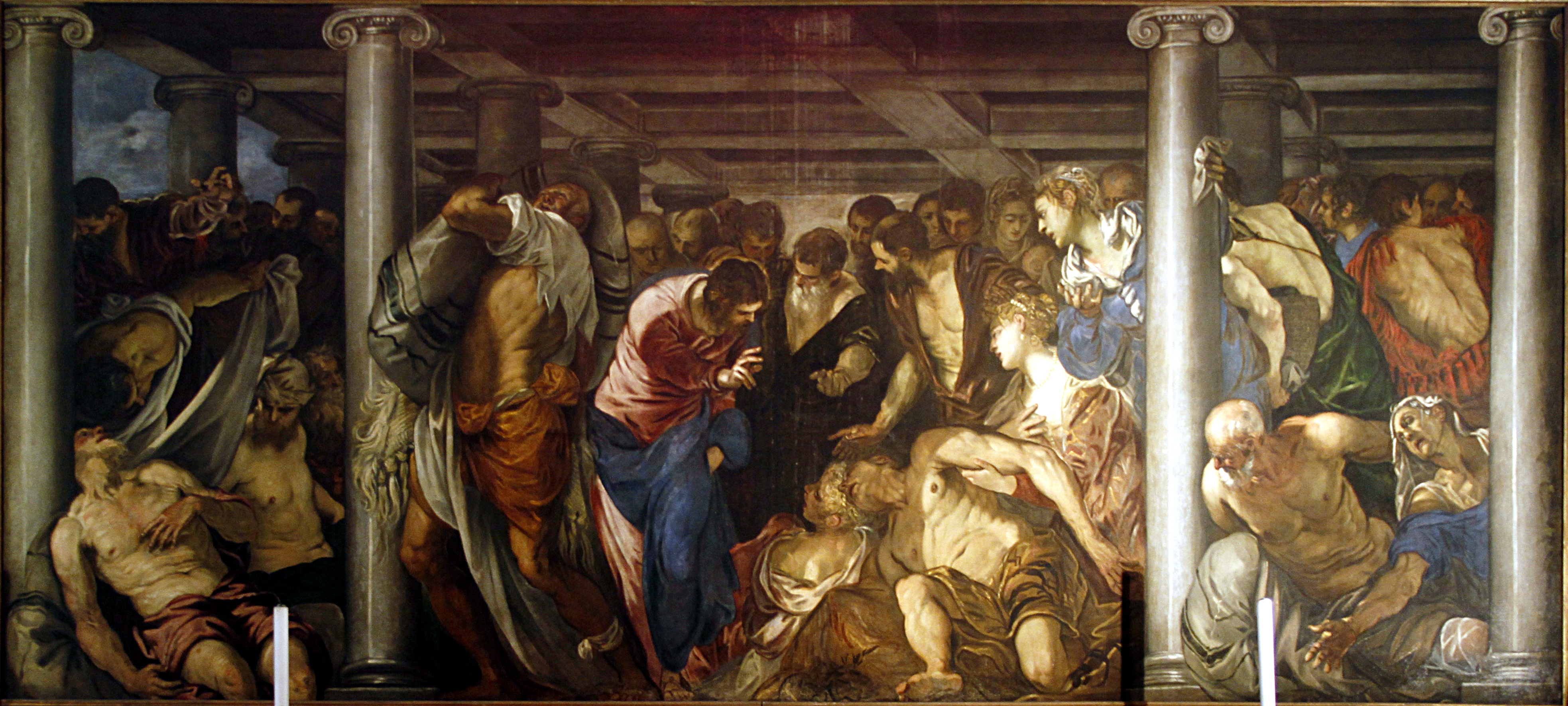Jesus Forgives and Heals a Paralyzed Man
Luke 5:15-26
17 One day Jesus was teaching, and Pharisees and teachers of the law were sitting there. They had come from every village of Galilee and from Judea and Jerusalem. And the power of the Lord was with Jesus to heal the sick. 18 Some men came carrying a paralyzed man on a mat and tried to take him into [the house] to lay him before Jesus. 19 When they could not find a way to do this because of the crowd, they went up on the roof and lowered him on his mat through the tiles into the middle of the crowd, right in front of Jesus.
20 When Jesus saw their faith, he said, “Friend, your sins are forgiven.”
21 The Pharisees and the teachers of the law began thinking to themselves, “Who is this fellow who speaks blasphemy? Who can forgive sins but God alone?”
22 Jesus knew what they were thinking and asked, “Why are you thinking these things in your hearts? 23 Which is easier: to say, ‘Your sins are forgiven,’ or to say, ‘Get up and walk’? 24 But I want you to know that the Son of Man has authority on earth to forgive sins.” So he said to the paralyzed man, “I tell you, get up, take your mat and go home.”25 Immediately he stood up in front of them, took what he had been lying on and went home praising God. 26 Everyone was amazed and gave praise to God. They were filled with awe and said, “We have seen remarkable things today.”
Observations & Reflection
From a devotional standpoint, the healing of the paralytic man is a wonderful story. However, from a critical study viewpoint it raises a few questions. The first question is what “one day” is referring to. The second question is where did this event take place? The text just says “there”. The third question who is the “son of man”? We will attempt to dive into these below.
- What day was it?
- It seems as though it would have been any day but the Sabbath. Had Jesus healed on the Sabbath, the Pharisees and Scribes would have been even more outraged (Luke 13:10-17).
- However, it’s possible that the gathering was in a synagogue which is a normal place of meeting on the Sabbath.
- Where did this take place?
- One would rightly think that the setting was a house, given the English translation. Many have suggested it was Peter’s house. However, the word house does not appear in the passage. In fact, no location is give at all. In the original Greek it just says they tried to “take him in”. The text does not say what they were taking him into.
- Many have assumed it was a house because the houses had thatched roofs with various types of vegetation as layers. These can be easily removed for ventilation and lighting needs. However, the synagogues have a similar roof construction, just on a larger scale. Below are some images demonstrating what a 1st century synagogue may have looked like.
- It should be noted that there was also a major synagogue in Capernaum.
- I think it’s possible that Jesus was at a meeting in the synagogue, given that there were droves of people that came from all over and that the ruling elites were present. It seems much more organized than the initial reading might lend itself.
- Mark, which is the first gospel written, seems to indicate that he was “at home”.
- Mark reads, “When He had come back to Capernaum several days afterward, it was heard that He was at home.” This would support the idea that Jesus was at his home or usual place of stay, which was Peter’s house, in Capernaum.
- Matthew, who copied from Mark, seems to indicate that Matthew might have assume Mark was referring to Jesus’ hometown and not his actual house.
- Matthew reads, “Jesus stepped into a boat, crossed over and came to his own town”.
- In conclusion, it seems we have no way of actually knowing where Jesus was when this event took place. Given the context of the passage and Luke’s usual attention to detail. it seems as though Jesus was probably in a house, not a synagogue. When Jesus does teach in the synagogues, Luke mentions that it’s the Sabbath and that they were in the synagogue. However, we should leave the door open for either interpretation.
- Who is the son of man?
- The son of man is a title that developed about 600 years before Christ. The term (בן–אדם) appears in the Old Testament over 100 times.
- In ancient texts like Daniel it’s often referring to an angelic type of figure (Daniel 7).
- God called Ezekiel “son of man” on numerous occasions (Ezekiel 2:1).
- Psalms used the term to refer to humans or mankind (Psalm 8:4).
- By most accounts, it’s not fully understood but the term usually refers to the intersection of man and the other-worldly. Even in Psalm 8 when it refers to mankind, it’s still speaking about God’s interactions with man.
Technical aspects aside, the story of the paralytic man is one where we see Jesus as the Son of God and risking His own life again, just to help others. This is now the second time in Luke that He is under threat for blasphemy. But Jesus is more than willing to lay down His life for mankind, which eventually does.



[Featured image by Jose Luiz, titled: The healing of the paralytic]
This file is licensed under the Creative Commons Attribution-Share Alike 4.0 International license.
